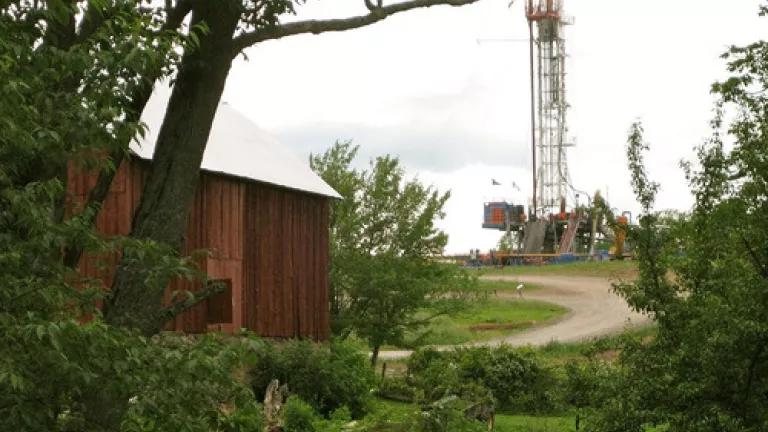
According to a recently leaked report, New York officials may allow fracking for natural gas in designated communities across the state. As reported, the plan would permit fracking in parts of five counties home to some of the most economically distressed communities in the state. Development in other areas in the Marcellus Shale region would presumably be restricted, at least initially, through the regulatory program.
NRDC opposes making a decision about whether or not to allow fracking—including in demonstration projects—before the impacts to our health, economy, and environment have been fully and properly assessed. The stakes are simply too high to shortcut the on-going review.
There are thousands of alarmed citizens across the state who are very concerned about the dangers associated with fracking. Governor Cuomo’s first job is to protect the residents of New York, and his administration can’t determine the best way to do that until the research is completed. If the state fails to make an informed decision about fracking, communities will pay the price.
New Yorkers only have to look at our neighbors in Pennsylvania to learn what reckless fracking can do to people’s health and livelihoods. Some residents have to rely on bottled water after fracking operations were suspected of contaminating their wells. Some homeowners can’t refinance their mortgages after drill pads moved in across the street. And some doctors have a hard time treating patients’ rashes, nausea, and neurological problems after gas companies refuse to reveal what toxins they use in fracking fluid.
New York has an opportunity to learn from these hazards, and indeed it has been committed to doing so. NRDC has welcomed the state’s decision to undertake a comprehensive review of what fracking does to people and places. Yet that review is by no means complete.
We submitted nearly 700 pages of comments on the state’s most recent draft environmental review, because it left many critical questions unanswered. It doesn’t answer lingering questions about health impacts. Nor does it fully analyze the social and economic toll fracking takes on communities in the form of increased truck accidents, impaired roads, overtaxed emergency response, and overcrowded schools and housing for out-of-state workers. The review doesn’t offer a plan for how to deal with the potentially millions of gallons of toxic wastewater that come out of every fracked well and threaten to contaminate drinking water supplies.
Until these and other outstanding issues are resolved, the state can’t make a safe and evidence-based assessment about fracking in New York.
The state can, however, move forward with generating energy from clean, renewable resources like wind and solar—resources that don’t release pollution, don’t spill, don’t foul our drinking water, and don’t run out. We should prioritize investing in clean energy projects that deliver good-paying jobs and preserve our air, water, and lands at the same time. New York has been a leader on wind power: the Maple Ridge wind project in Lewis County is one of the largest wind projects east of the Mississippi, creating clean energy and jobs in dairy country where extra revenues are welcomed.
But New York can and must do more on the clean energy front, and in particular on solar power, a resource neighboring states have already invested heavily in, leaving New York far behind. We appreciate Governor Cuomo’s recent support of a long-term solar policy for New York. We also welcome a plan to assist communities that are facing coal plant shutdowns by using funds generated from lowering the regional cap on carbon pollution. The Legislature now needs to step forward and pass a common-sense proposal so we can have clean energy jobs in New York right away.
I also welcome Governor Cuomo’s indication that he will honor the decisions made by local governments to protect themselves against the dangers of fracking. Community empowerment and control is a key aspect of the fracking safeguards that NRDC seeks. Of course, the federal and state government can and must develop and enforce protective regulations. But communities should still be able to exercise basic zoning and land use powers on natural gas production, just as they can with other kinds of industrial and commercial uses.
Most New Yorkers prefer a cleaner, more sustainable energy plan. A recent poll conducted by Cornell University found that by a margin of nearly two to one, New Yorkers think the risks of natural gas drilling would outweigh the revenue. That’s why so many have opposed fracking. By raising their voices, these residents have made their wishes known from Albany to town halls and county offices around the state. They have significantly influenced the way the state is handling this issue, and I applaud their commitment to preserving the health and well-being of New York’s communities.
To date, New York State’s environmental review process has been deliberative and the State has resisted industry cries to speed through this important review. We urge New York to continue with a thoughtful, science based process. Until New York has completed its comprehensive review, the state must make no decisions on whether to allow fracking to proceed in demonstration projects or anywhere else in the state.
